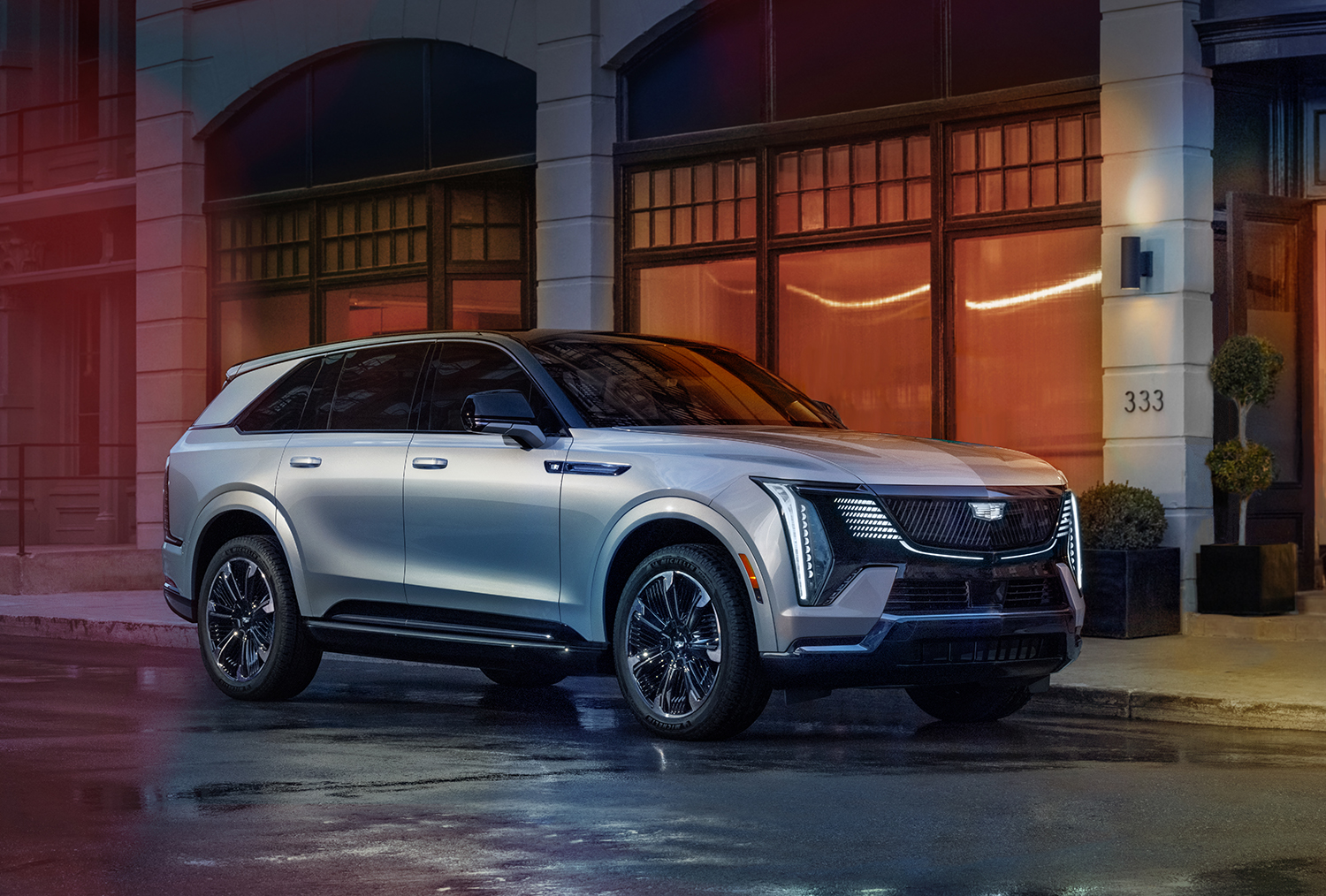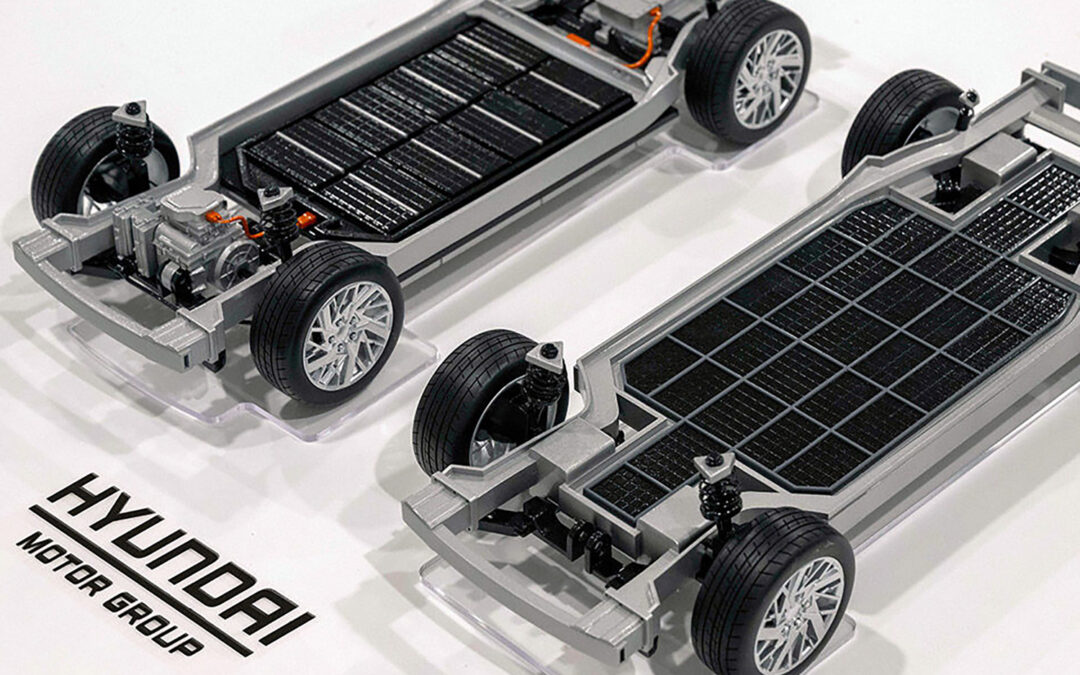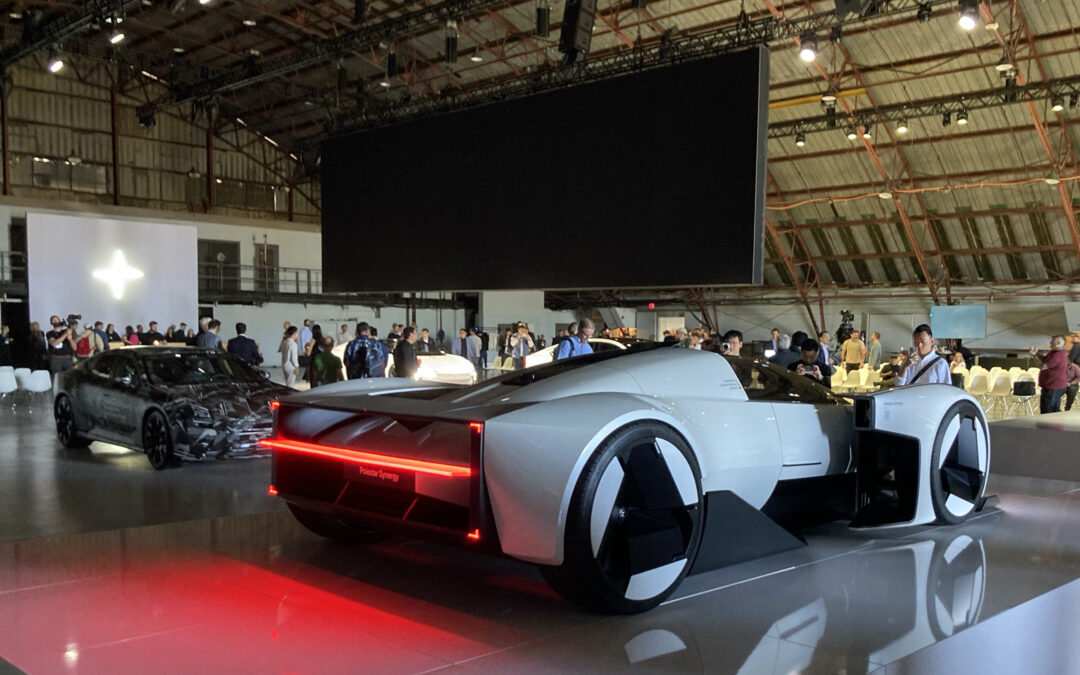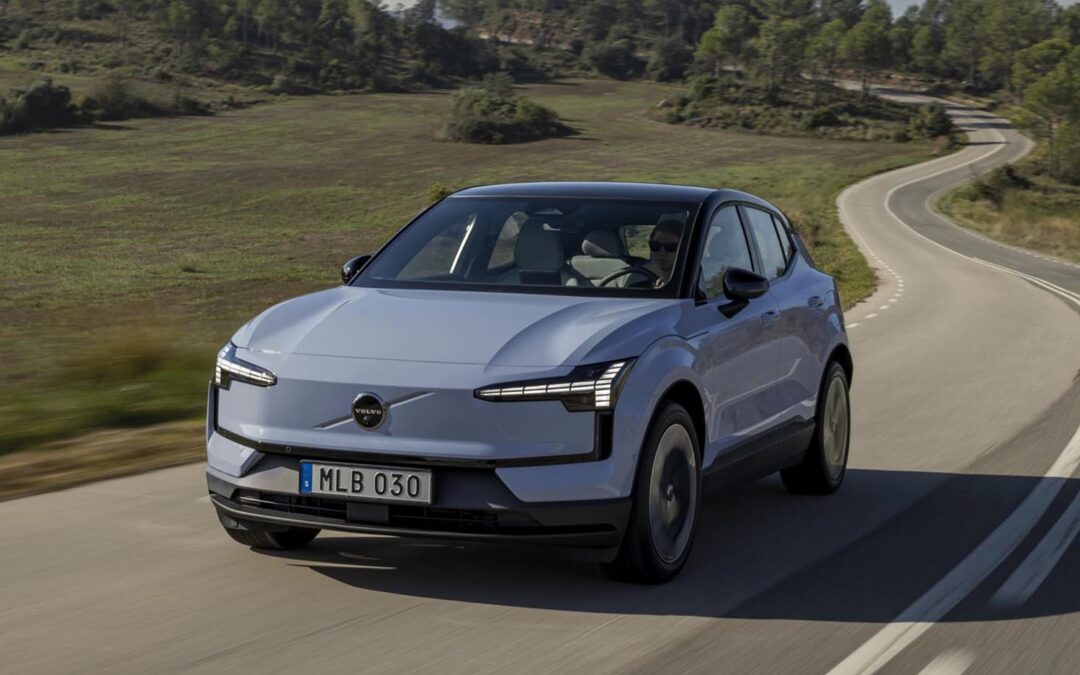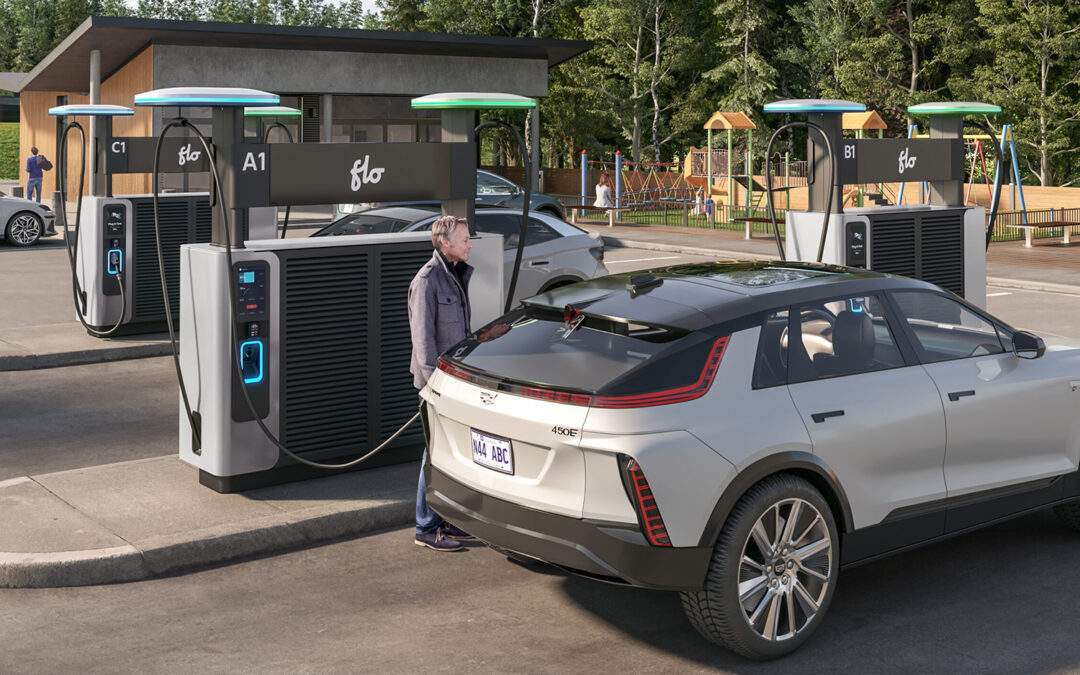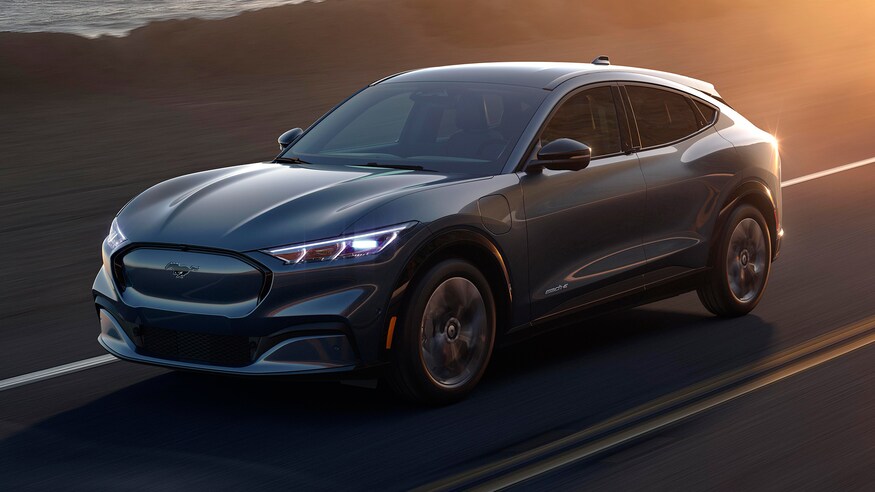In very big news for Cadillac, the American luxury brand has just taken the silks off its latest EV: the Escalade IQ. And ‘big’ is almost an understatement.
The all-electric, full-sized SUV joins the Lyriq mid-sized SUV and the Celestiqe, Cadillac’s US$340,000-plus ultra-luxury sedan in the brand’s EV lineup. But the Escalade IQ is big for Cadillac in many ways beyond the vehicle’s gargantuan proportions and earth-shaking weight.
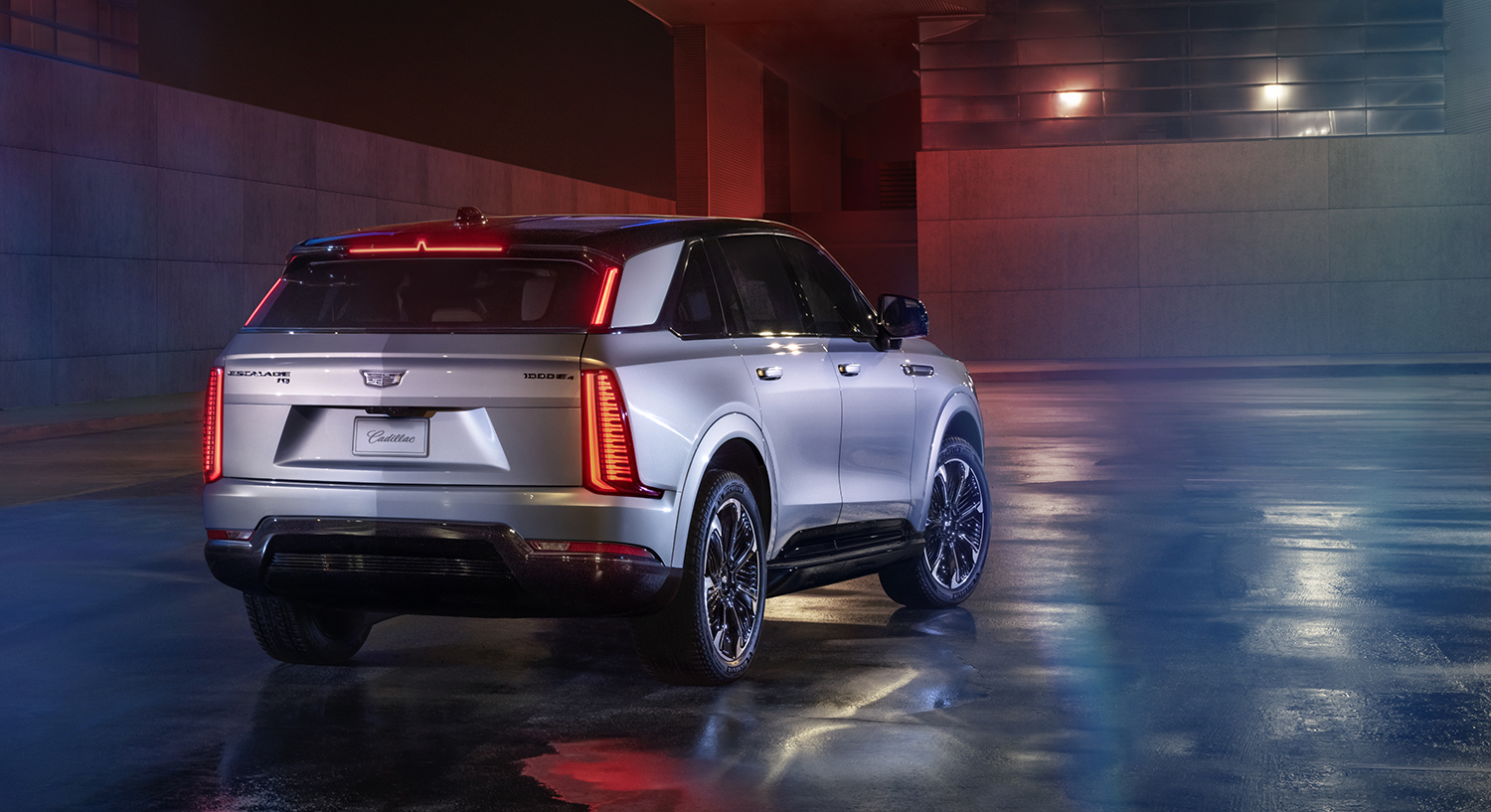
Cadillac Escalade IQ
The gas-powered Escalade has been the flagship for the luxury brand since it debuted for the 1999 model year, and arguably helped save Cadillac from oblivion at a time when its cars were favoured more by the blue-hair set in gated Florida enclaves than anyone else. Suffice to say, it was not a desirable brand at the time.
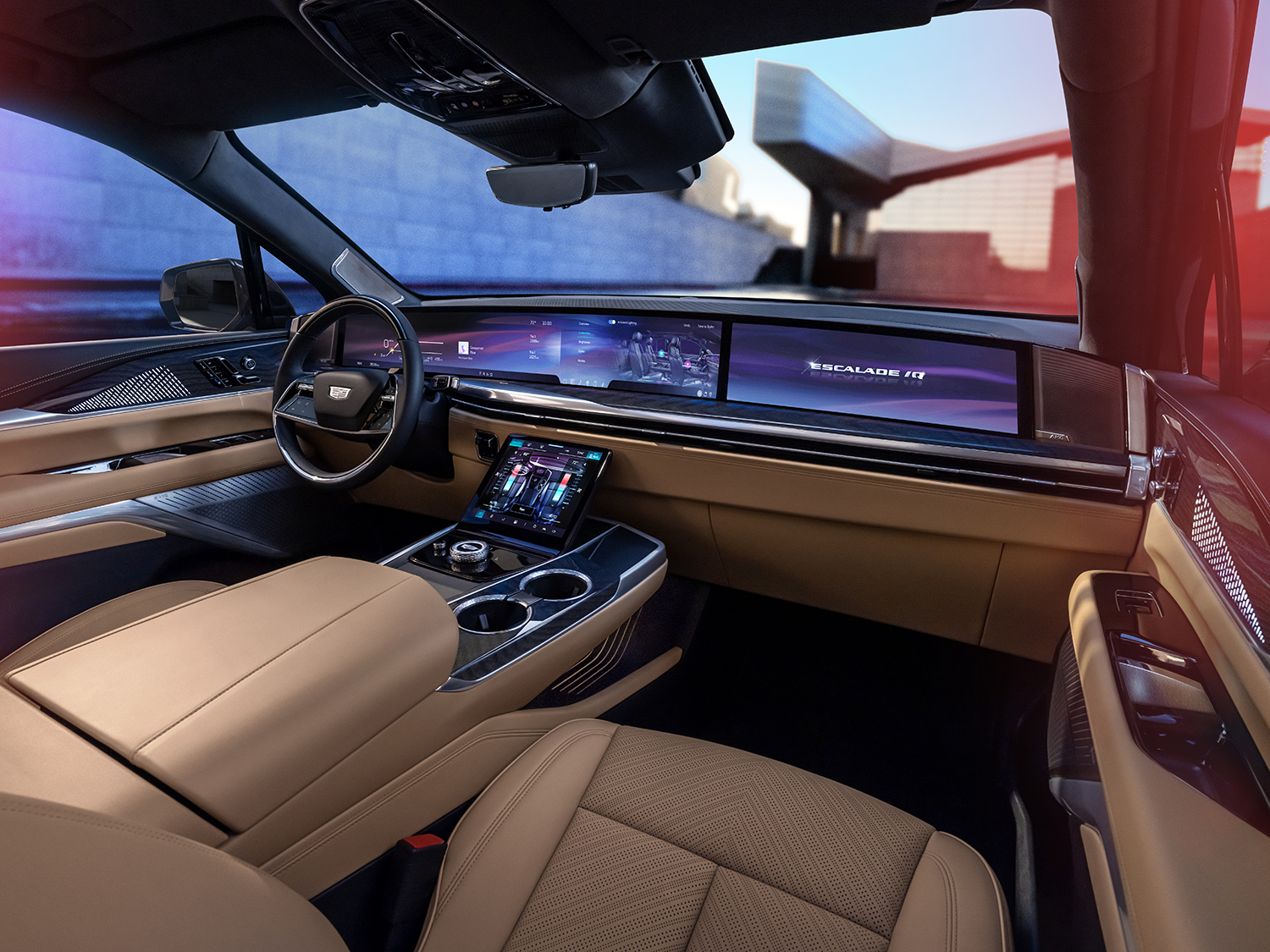
Cadillac Escalade IQ
Fast forward to today, and the Escalade has sold more than one million models worldwide, making up one out of every three sales in the large, luxury SUV segment. In fact, while Cadillac’s naming convention for its EVs involves an ‘IQ’ in each name (Lyriq, Celestiq), you don’t mess with a brand name that has become synonymous with success (or excess, if you so wish), hence the addition of IQ after the Escalade name.
What you see here is very different from the fifth-generation, gas-powered Escalade that debuted in 2021. It’s a clean-sheet design, much more rounded and sleek, based on General Motors’ Ultium Platform. With a massive 200 kWh (useable) battery (part of its chassis structure) Cadillac says the Escalade IQ will have a range of up to 724 kilometres. Twin motors (AWD is, of course, standard) deliver 680 hp and 615 lb.-ft. of torque under normal driving, but 750 hp and 785 lb.-ft. is available under the Velocity Max mode. With DC fast charging, it will get up to 160 km of added range in 10 minutes.
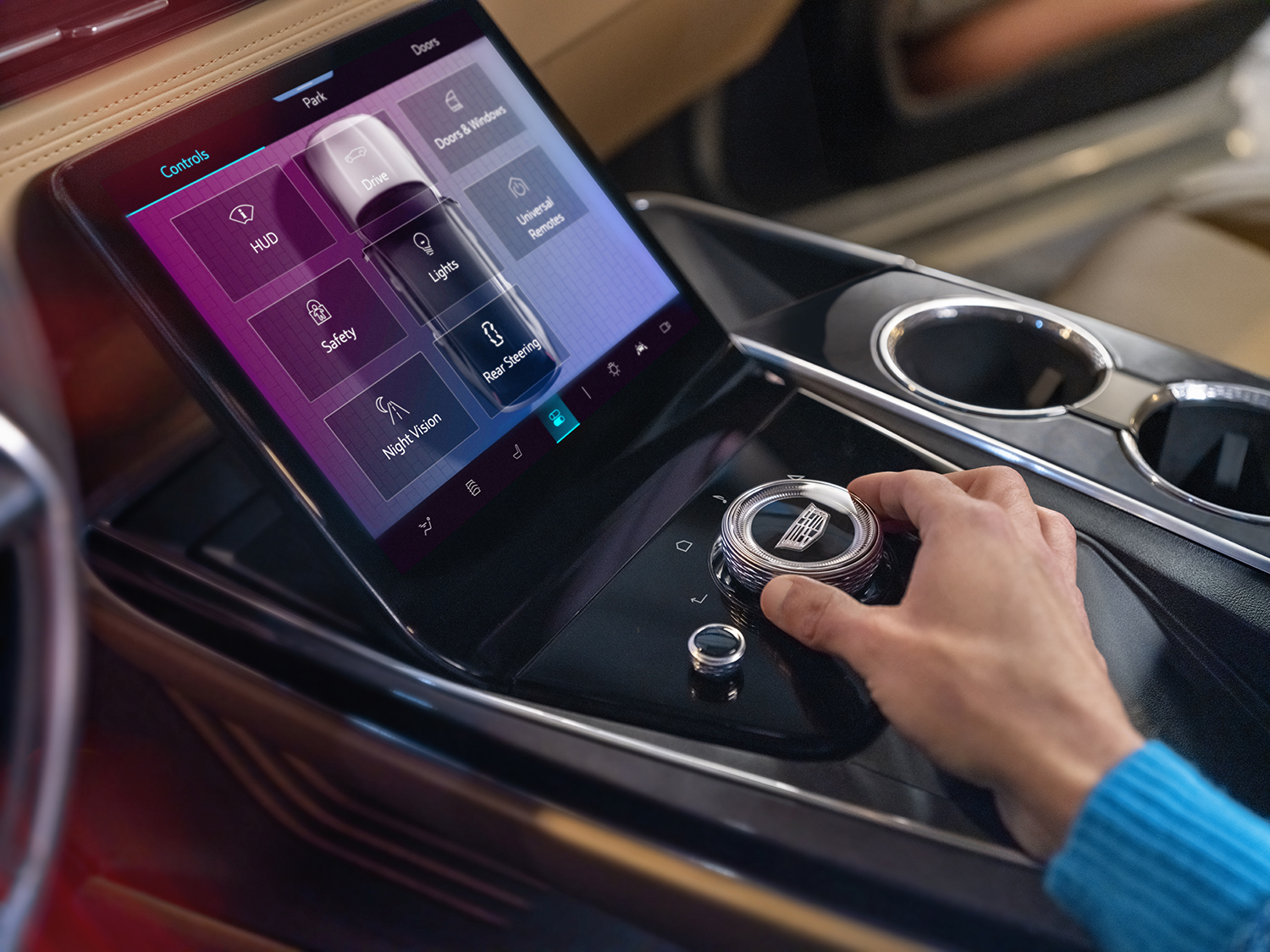
Cadillac says it will also get to 100 km/h in under 5 seconds, and has a max towing capacity of up to 8,000 lbs. It does not, however, list the vehicle’s weight. Considering the GMC Hummer’s 212-kWh battery alone weighs 1,278 kilograms – roughly the weight of a Honda Civic – we can expect this Escalade IQ to be around the Hummer’s crushing total weight of 4,111 kg.
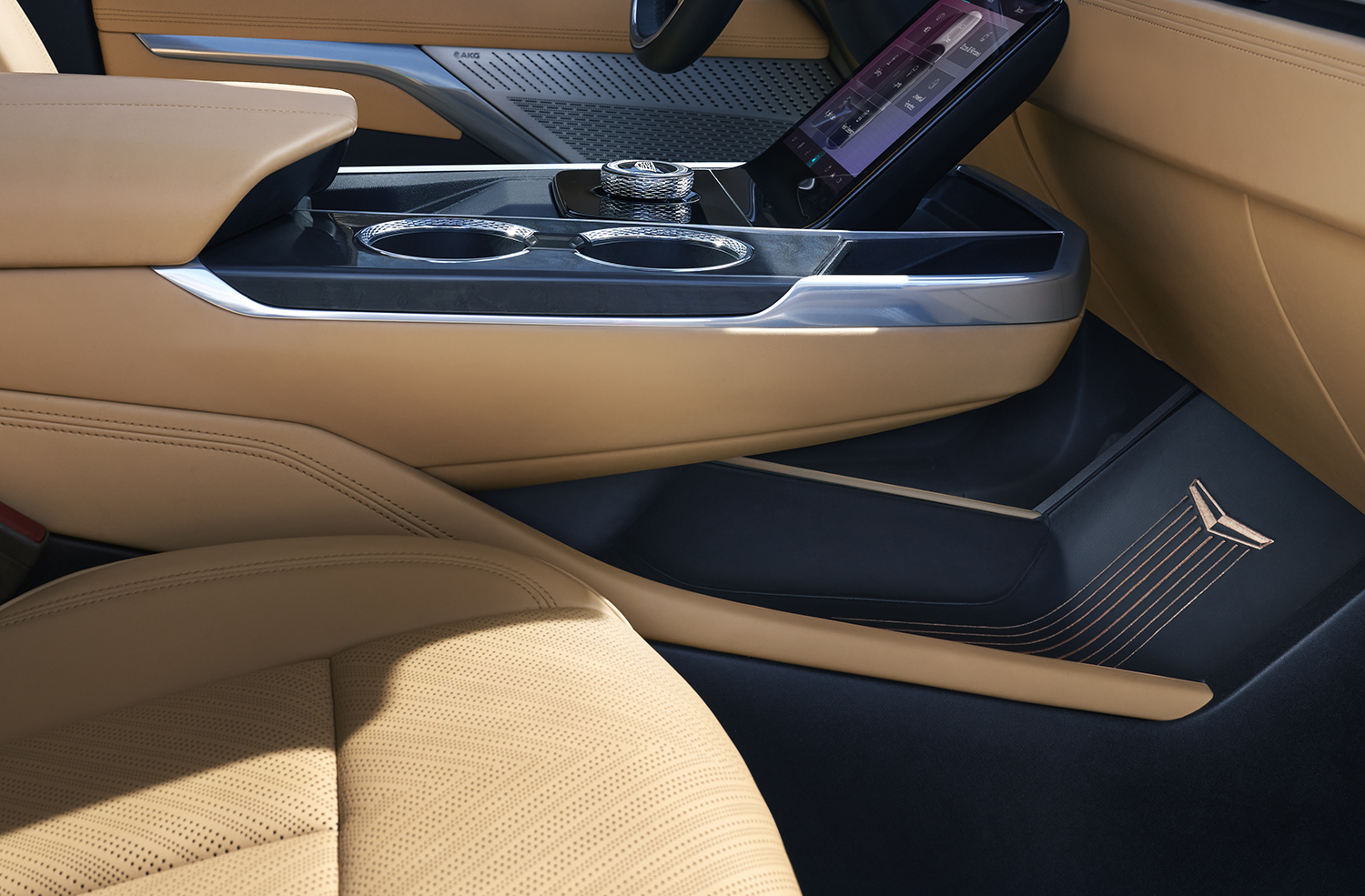
Outside, the nose is longer than the gas version, but the whole design blends together smoothly, all while keeping the imposingly large dimensions you expect from an Escalade: a wheelbase of 3,460 mm, a length of 5,697 mm, total width of 2,389 mm and a height of 1,934 mm, all riding on massive 24-inch wheels and 35-inch tires.
Having two different Escalades on the same showroom floor may sound confusing, but it doesn’t bother Mike Speranzini, managing director of Cadillac Canada.
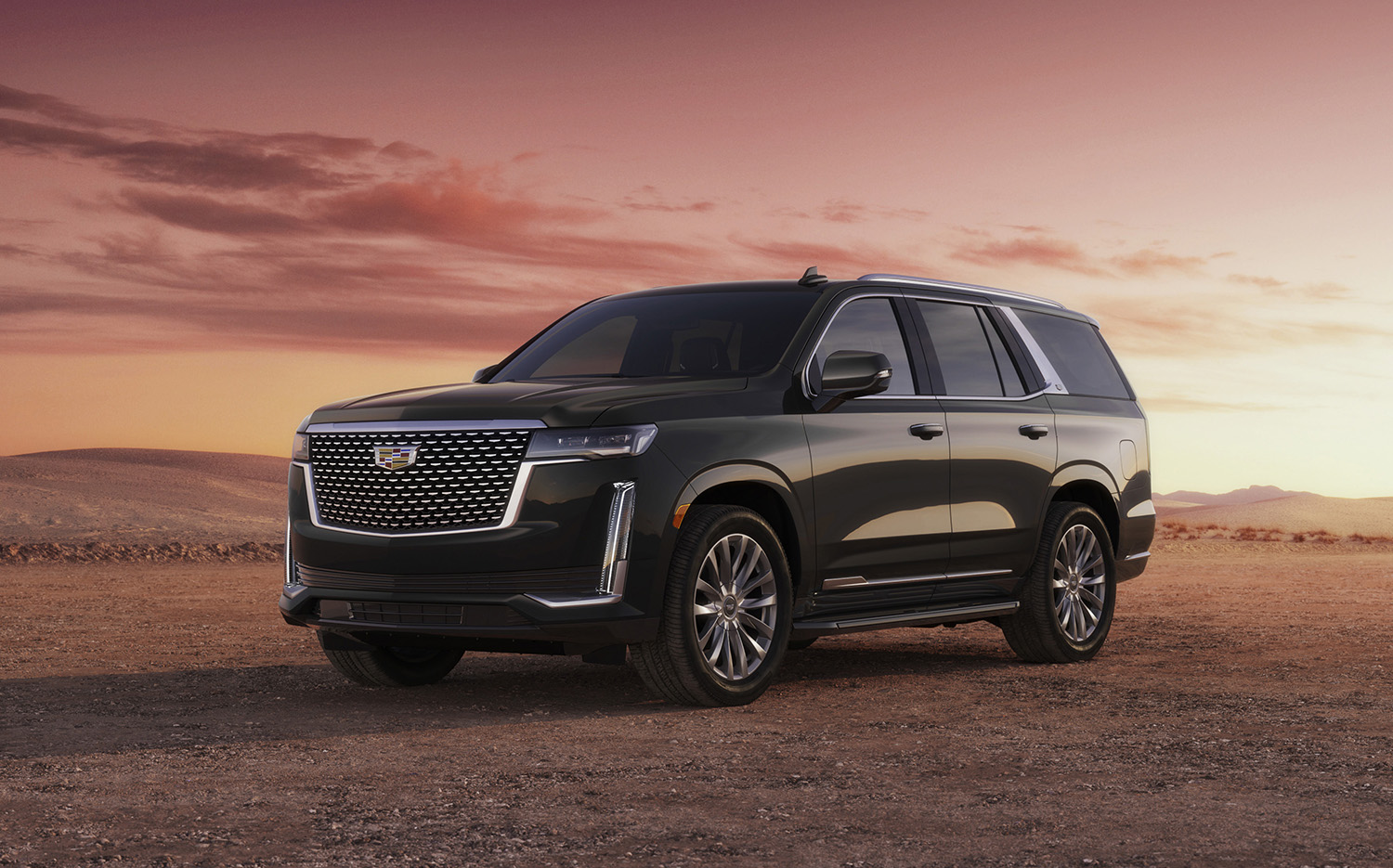
2023 Cadillac Escalade
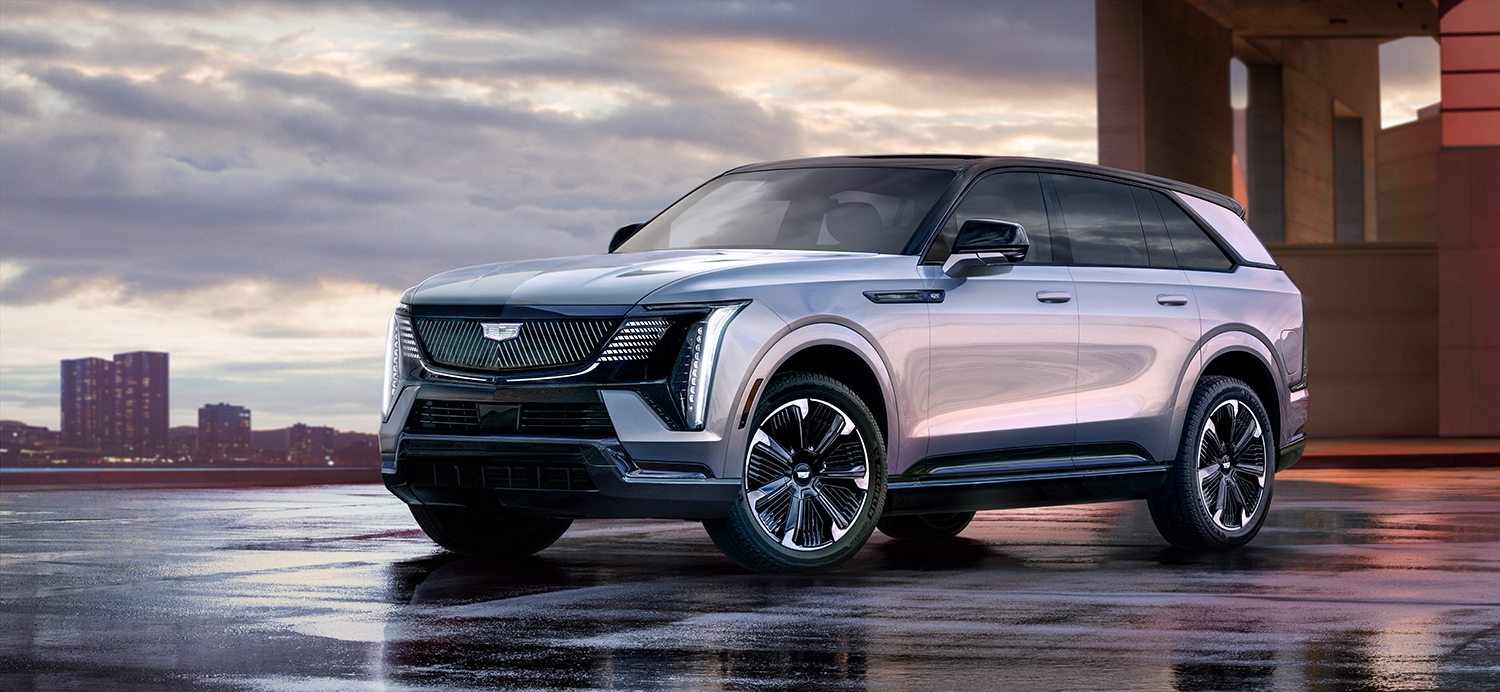
Cadillac Escalade IQ
“It’s just part of a continued evolution,” he says. “For the Escalade IQ, we started with the Ultium Platform and started out to build an all electric, large luxury SUV. If it looked identical, it might suggest to consumers that we just took the old vehicle and converted it to electric.
“So this vehicle is all-new from the ground up. I actually think it’s important to make them different.”
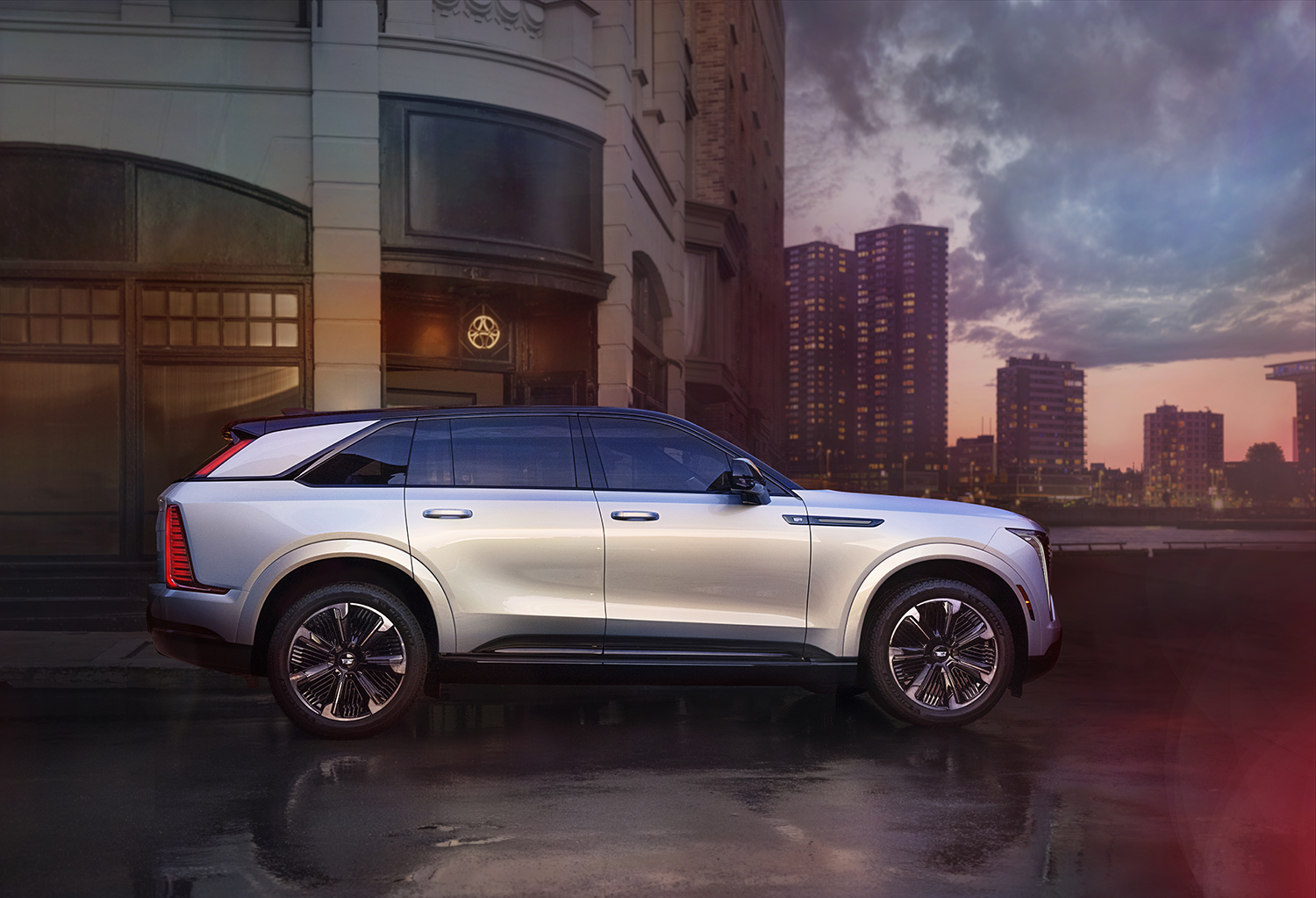
Cadillac Escalade IQ
Of course, the Escalade IQ has to nail high-end luxury, and it does. And it offers a few notable features only possible because of its EV platform. For example, it boasts four-wheel steering, standard across all models, that Cadillac says will make the Escalade IQ feel smaller and more nimble both at slow and high speeds. And its Arrival Mode emulates the GMC Hummer’s ‘Crabwalk’, where all four wheels can be turned in the same direction. This helps in parking the massive SUV.
Another EV-only feature is its ‘eTrunk’, or the frunk up where the gas engine would normally sit. It adds 345.4 litres of cargo space, helping compensate for the loss of comparable cargo in the back because of the sloping roof. It’s deep enough for suitcases, but it goes back so far you might need a hook to retrieve items. Mandi Dammon, chief engineer of the Escalade IQ project, says the EV version has comparable cargo space with the gas-powered Escalade ESV extended version, if you include the eTrunk.
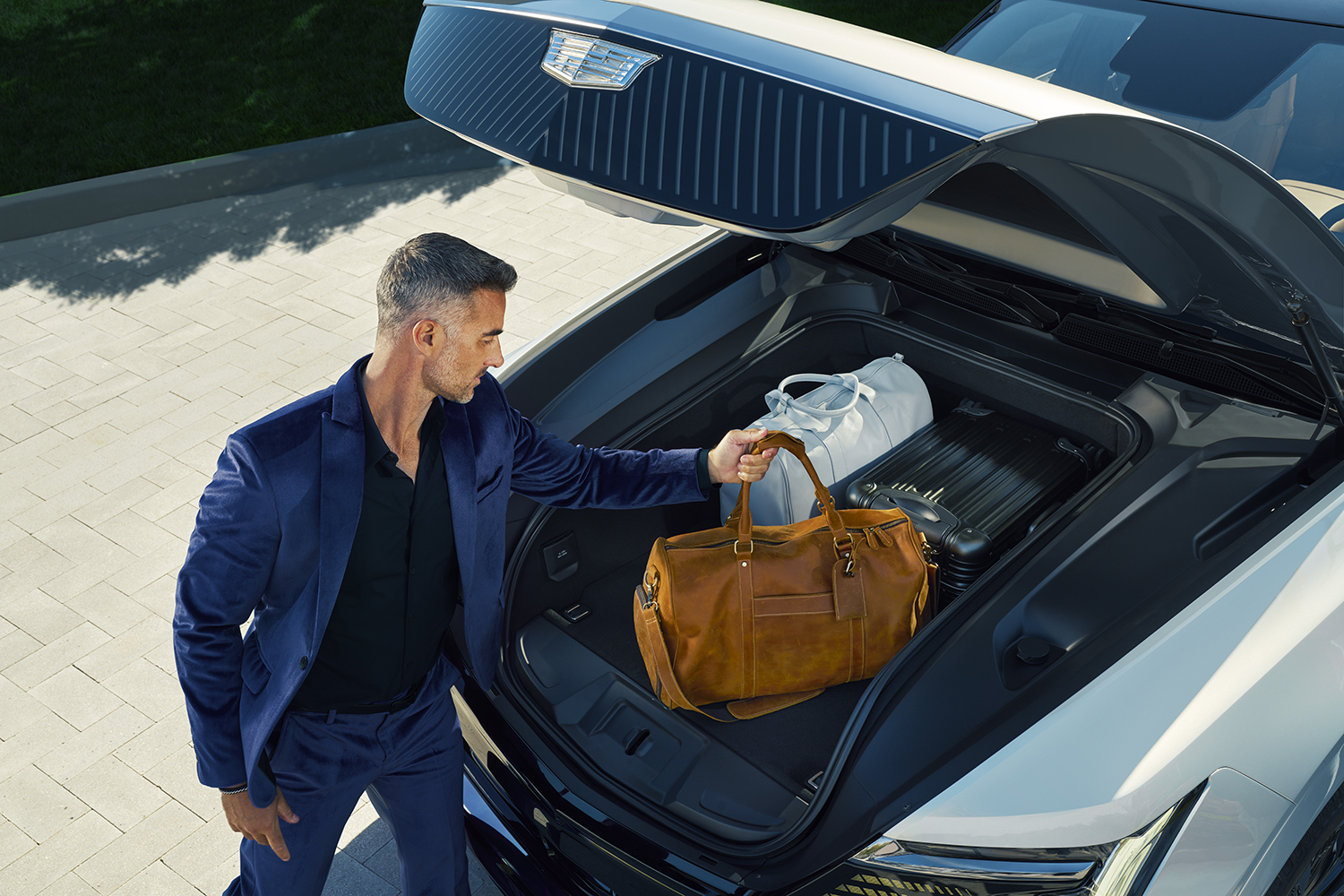
Cadillac Escalade IQ
Inside is a cocoon of opulence. The front is dominated by a 55-inch screen, with 35 inches for the driver and 20 inches dedicated to the front passenger. Climate and other features are controlled with a smaller, 11-inch screen, hence the lack of switches. Soft leather is everywhere, and there is a handy storage area under the centre console for bags.
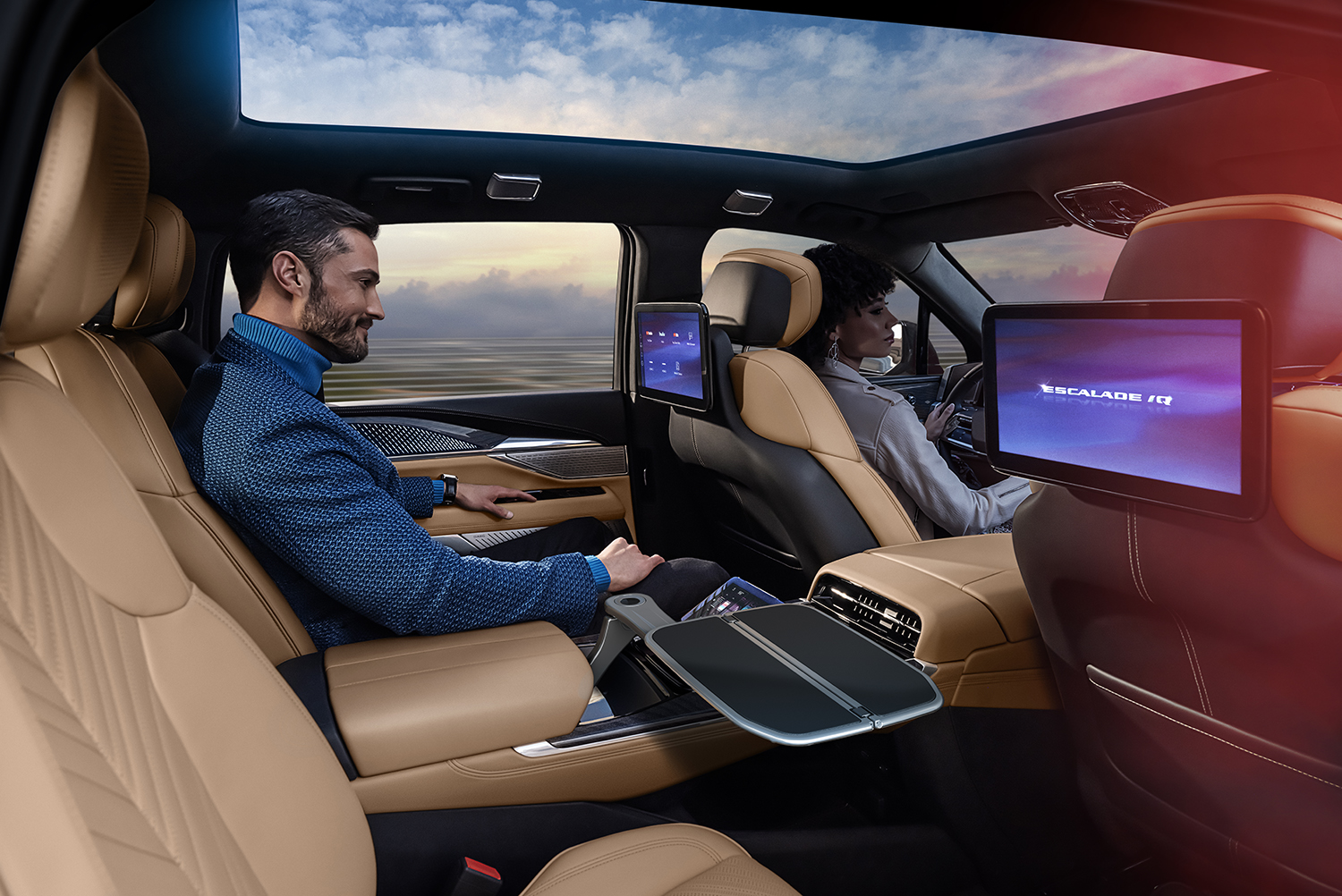
Cadillac Escalade IQ
You’ll feel lucky to be a second-row passenger, especially with the available Second Row Seating Package. Not only would you enjoy 1,051 mm of leg room, but the 12.6-inch personal screens, stowable trays and massaging seat backs will make you feel you’re on a first-class flight. Third-row passengers, however, will suffer like steerage, with just 765 mm of leg room.
Other notable features include:
- A panoramic, fixed-glass sunroof with UV filter
- An available 40-speaker AKG Studio Reference sound system
- SuperCruise hands-free driving, available on close to 650,000 km of highways across Canada and the US
- Customizable interior lighting with up to 126 colour choices
- Magnetic Ride 4.0 and Adaptive Air Ride Suspension
- V2H and V2L charging capabilities
- A full suite of driver aid systems, including Blind Zone Steering Assist, Intersection Automatic Braking and HD Surround Assist, among many others
- Available power door open and close with the touch of a button; if activated, the driver’s door will automatically open with the proximity of the key fob
Cadillac’s Dammon sees the Escalade IQ as a way to expand Cadillac’s EV customer base, even at the expense of the ‘other’ one in the showroom. “Will it bring over some ICE (internal-combustion engine) customers? Yes, absolutely. As well as with this having a very different look. We are seeing that with the Lyriq, with 40 per cent of those sales being conquest, so there’s a lot of opportunity here to not only take our own ICE (Escalade) customers, but also expanding outside the brand.”
As mentioned, this is Cadillac’s third EV in the lineup, and on its road to becoming fully electric by 2030, it will also introduce two more EVs by the end of this year.
The Cadillac Escalade IQ will begin production at GM’s Factory Zero in Michigan next summer, with a starting price south of the border of US$130,000. Canadian pricing will be announced closer to the production.
